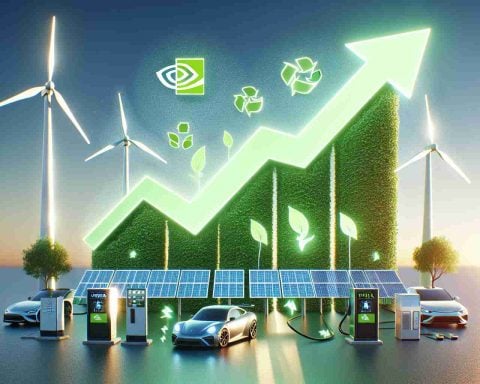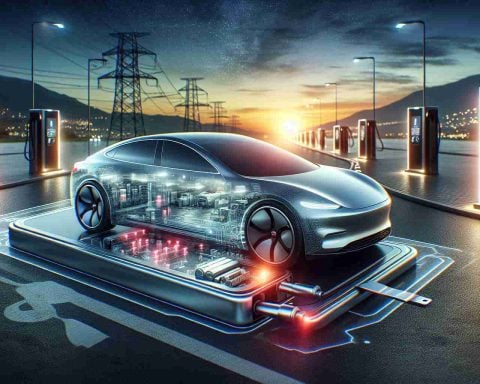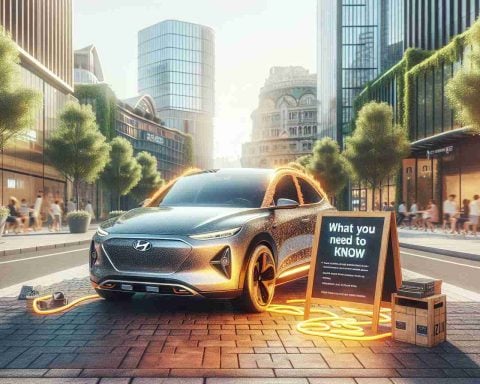- CATL remains the leading power battery manufacturer with a 37.9% market share in 2024.
- Battery supply from CATL reached 339.3 GWh, reflecting a 31.7% growth in the EV sector.
- Total global EV battery usage surged to 894.4 GWh, marking a 27.2% increase from the previous year.
- BYD has climbed to the second position with a 17.2% market share and 153.7 GWh of installations.
- LG Energy Solution ranks third with a 10.8% market share, down from 13.5%.
- CATL and BYD are positioned to significantly influence the future of electric vehicle battery technology and sustainable transportation.
In an electrifying display of power, CATL continues to reign as the world’s largest power battery manufacturer in 2024, boasting an impressive 37.9% market share—a leap from 36.6% the previous year. The company supplied 339.3 GWh of batteries, signifying a 31.7% growth from 2023 in the booming electric vehicle (EV) sector.
The global appetite for EV batteries soared, with total usage hitting 894.4 GWh this past year—a 27.2% increase from 703.2 GWh in 2023. Major players like Tesla, BMW, and Volkswagen are turning to CATL’s batteries to power their innovative vehicles, while Chinese manufacturers like Zeekr and Li Auto are also onboard.
Not far behind, BYD has catapulted its market share to 17.2%, climbing from 15.9% and securing the second position. With battery installations soaring to 153.7 GWh, BYD is not just a battery producer; it is a dynamic EV manufacturer aggressively expanding into Asian and European markets, gaining traction with its competitively priced vehicles.
Meanwhile, LG Energy Solution holds the third position with a 10.8% share, but saw a decline from its 13.5% share last year. Other companies—including CALB, SK On, and Panasonic—are also key players, but the dominance of CATL and BYD is clear.
Takeaway: As the EV market accelerates, CATL and BYD are charging ahead, redefining the battery landscape and shaping the future of sustainable transportation.
Powering the Future: Insights into the EV Battery Market Dynamics in 2024
Overview of the Current EV Battery Market
As of 2024, the electric vehicle (EV) battery market is undergoing significant transformations, with a sharp increase in demand driven by advancements in technology and growing environmental sustainability concerns. CATL leads the charge, maintaining its position as the world’s largest power battery manufacturer with an astonishing 37.9% market share, supplying 339.3 GWh of batteries—an impressive growth of 31.7% from the previous year.
The overall global consumption of EV batteries has reached 894.4 GWh, marking a notable 27.2% increase from 703.2 GWh in 2023. This surge is largely attributed to major global players like Tesla, BMW, and Volkswagen incorporating CATL’s batteries in their innovative vehicles. Additionally, Chinese manufacturers such as Zeekr and Li Auto are capturing market attention by utilizing CATL’s cutting-edge technology.
BYD has notably increased its market share to 17.2%, an ascent from 15.9%, with battery installations reaching 153.7 GWh. This advancement positions BYD as a formidable contender in the EV sphere alongside CATL, as it broadens its influence in Asian and European markets through competitively priced vehicles.
Emerging Trends and Innovations
– Sustainability and Recycling: Manufacturers are increasingly focusing on sustainable practices, including battery recycling solutions to address environmental concerns related to lithium extraction and battery disposal.
– Solid-State Batteries: Innovations in solid-state battery technologies could revolutionize the market by offering greater energy densities and improved safety over traditional lithium-ion batteries.
– Charging Infrastructure: The expansion of charging stations globally is crucial to supporting the growing number of EVs, with significant investments from both private and public sectors.
Market Analysis and Forecast
– Growth Projections: The EV battery market is anticipated to continue its upward trajectory, with projections indicating a compounded annual growth rate (CAGR) of over 20% in the coming years, largely driven by increasing EV penetration in both consumer and commercial sectors.
– Diverse Applications: Beyond passenger vehicles, EV battery usage is expanding into sectors like public transportation and logistics, pushing for diversified applications.
Key Questions About the EV Battery Market
1. What are the primary factors driving the growth of the EV battery market?
– The primary factors include advancements in battery technology, rising environmental awareness, government incentives for EV adoption, and an increasing number of EV models from manufacturers globally.
2. How do CATL and BYD compare in terms of innovation and market strategy?
– CATL focuses on high-capacity lithium-ion battery production and extensive partnerships with leading automakers, while BYD combines battery manufacturing with a strong emphasis on producing high-quality EVs, focusing on market expansion and affordability.
3. What are the key challenges facing the EV battery industry?
– The industry faces challenges such as supply chain constraints, fluctuating raw material prices, environmental impacts of battery production, and the need for improved recycling methods to ensure sustainability.
Suggested Resources
For further insights, visit the following links for detailed analyses and updates on the EV battery market and its major players:
– CNBC
– Bloomberg
– Reuters
In concluding this analysis, it is evident that CATL and BYD are pivotal in shaping the future of sustainable transportation, cementing their dominance in the rapidly evolving landscape of the EV battery market.



















